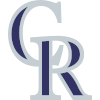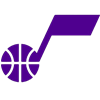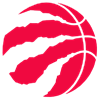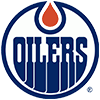Doing a few fantasy football drafts this past week has had me thinking back to the fantasy baseball draft season. With MLB's regular season nearly over, it's pretty safe to look back and assess where we went wrong over the winter, as very little that will happen over the final few weeks of the season will significantly impact a player's value.
I've spent some time over the past few days looking at the players I was lowest on over the winter. There were definitely some hits there —avoiding Francisco Lindor and Adalberto Mondesi has certainly helped my teams — but there were some notable misses as well. I thought it might be an interesting exercise to use the introductory space this week to look at a few of my notably incorrect pans at the top of the draft, with an eye toward figuring out whether it was a bad process that led to those misses (something I can correct in the future) or if it was more a result of bad luck.
The following players are guys I was the lowest on in our final Roundtable Rankings prior to the season and went on to outperform my expectations.
My rank: 17; Roundtable rank: 14; Earned auction value rank: 10
I wasn't far from the pack on Freeman, but being even a few spots low on a guy in this range means you aren't ending up with him. I don't think there was one primary reason I undervalued
Doing a few fantasy football drafts this past week has had me thinking back to the fantasy baseball draft season. With MLB's regular season nearly over, it's pretty safe to look back and assess where we went wrong over the winter, as very little that will happen over the final few weeks of the season will significantly impact a player's value.
I've spent some time over the past few days looking at the players I was lowest on over the winter. There were definitely some hits there —avoiding Francisco Lindor and Adalberto Mondesi has certainly helped my teams — but there were some notable misses as well. I thought it might be an interesting exercise to use the introductory space this week to look at a few of my notably incorrect pans at the top of the draft, with an eye toward figuring out whether it was a bad process that led to those misses (something I can correct in the future) or if it was more a result of bad luck.
The following players are guys I was the lowest on in our final Roundtable Rankings prior to the season and went on to outperform my expectations.
My rank: 17; Roundtable rank: 14; Earned auction value rank: 10
I wasn't far from the pack on Freeman, but being even a few spots low on a guy in this range means you aren't ending up with him. I don't think there was one primary reason I undervalued Freeman, I instead just preferred a few other guys in that range, which was only slightly wrong in the case of Bryce Harper and very wrong in the case of Cody Bellinger and Trevor Bauer. I'm not seeing a systematic bias I can correct here.
My rank: 36; Roundtable rank: 25; Earned auction value rank: 11
I intentionally value strikeouts higher than most drafters when building my pitching staff due to their year-to-year stability compared to other categories. Buehler has never posted a 30 percent strikeout rate, something the 11 pitchers I ranked ahead of him had all accomplished. As it turns out, Buehler has gone on to be the second-most valuable pitcher this season despite a career-low 26.0 percent strikeout rate. I'm not going to dramatically alter my approach toward strikeouts, but I should perhaps tone it down at least a bit for guys who consistently dominate other categories.
My rank: 45; Roundtable rank: 41; Earned auction value rank: 19
My rank: 52; Roundtable rank: 40; Earned auction value rank: 20
I've grouped these two together because my reason for undervaluing them was the same: I'm scared of speed-first players in their 30s. Both of these players typically produce batting lines that are only slightly above-average, combining a good batting average with generally sub-par homer totals. I was worried that their steals could drop off with age, leaving them as mostly empty batting average guys, which isn't something in which I want to invest a third-round pick. As it turns out, they've both lapped the field in stolen bases, swiping at least 30 bags in a season in which no one else has even reached 30. I foresee myself being equally scared of investing in either guy in their age-33 seasons next year, as I'd rather be out a year too early than a year too late on this sort of player, but I should at minimum do more digging on these two than I otherwise would have.
My rank: 50; Roundtable rank: 42; Earned auction value rank: 1
This is the one I'm most annoyed at myself about. I typically have the ability to admit that projection systems might be smarter than me at times and generally listen to them more than I believe most drafters do, but I went against that principle here. The projections almost universally loved Guerrero heading into the year (albeit not at the best-player-in-baseball level), yet I saw a player who had averaged a modest 19 homers per 600 plate appearances and whose forgettable .269 batting average came in above what his Statcast numbers suggested he deserved. But that narrow outlook ignores his absurd minor-league numbers and ignores the fact that merely being above-average at age 20 and 21 in the majors historically means a player is likely to end up great, something the projections are excellent at reminding us. I'm not sure why I thought I was too good for the projections in this case, but I need to remember to check that ego this coming draft season.
Hopefully that exercise provides a window into some of the factors that can cause you (or at least me) to misevaluate players and can help you think about some of your own biases that make you miss out on strong seasons. For now, let's move on to a group of players we might misevaluate next season.
RISERS
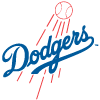 Max Scherzer, SP, Dodgers: You could argue that it's almost impossible to count him as a "riser" given Scherzer's career resume, but the 37-year-old's performances over his last four starts count as rising no matter where you set your baseline. He hasn't allowed a single earned run over that stretch, allowing just 12 hits in 29.2 innings while striking out 40.2 percent of opposing batters and walking just 1.0 percent. The seemingly ageless future Hall of Famer capped off that run by carrying a perfect game into the eighth inning while recording his 3,000th career strikeout Sunday against the rival Padres. Scherzer has been the best pitcher this season according to our earned auction values page, and it's not difficult to make the case that he should be the first pitcher off the board next year. Age is obviously a relevant factor, but can you sense much aging in a pitcher who's currently posting a career best in ERA (2.17), WHIP (0.82) and strikeout rate (35.4 percent)? Me neither.
Max Scherzer, SP, Dodgers: You could argue that it's almost impossible to count him as a "riser" given Scherzer's career resume, but the 37-year-old's performances over his last four starts count as rising no matter where you set your baseline. He hasn't allowed a single earned run over that stretch, allowing just 12 hits in 29.2 innings while striking out 40.2 percent of opposing batters and walking just 1.0 percent. The seemingly ageless future Hall of Famer capped off that run by carrying a perfect game into the eighth inning while recording his 3,000th career strikeout Sunday against the rival Padres. Scherzer has been the best pitcher this season according to our earned auction values page, and it's not difficult to make the case that he should be the first pitcher off the board next year. Age is obviously a relevant factor, but can you sense much aging in a pitcher who's currently posting a career best in ERA (2.17), WHIP (0.82) and strikeout rate (35.4 percent)? Me neither.
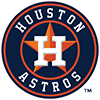 Kyle Tucker, OF, Astros: Tucker featured in this column back in late July, as his surface stats had finally begun to catch up to his expected numbers following some bad luck early in the season. He's continued to dominate since that point, hitting .348/.417/.652 with seven homers and four steals in the 32 games since his previous appearance. He's been especially dominant over his last nine games, a stretch in which he's hit .484 with three homers and just three strikeouts. This is going to wind up as a breakout campaign for the 24-year-old, and things could have been even better, as his .293 average and .549 slugging percentage still trail his .311 xBA and .586 xSLG by meaningful margins. The combination of contact and power he's shown this season is almost unparalleled. Among qualified hitters, only Juan Soto beats both his 48.5 percent hard-hit rate and his 15.8 percent strikeout rate. When you add in that Tucker combines those skills at the plate with good speed, as seen in his 13 steals, he starts to look like a player who deserves first-round consideration next season.
Kyle Tucker, OF, Astros: Tucker featured in this column back in late July, as his surface stats had finally begun to catch up to his expected numbers following some bad luck early in the season. He's continued to dominate since that point, hitting .348/.417/.652 with seven homers and four steals in the 32 games since his previous appearance. He's been especially dominant over his last nine games, a stretch in which he's hit .484 with three homers and just three strikeouts. This is going to wind up as a breakout campaign for the 24-year-old, and things could have been even better, as his .293 average and .549 slugging percentage still trail his .311 xBA and .586 xSLG by meaningful margins. The combination of contact and power he's shown this season is almost unparalleled. Among qualified hitters, only Juan Soto beats both his 48.5 percent hard-hit rate and his 15.8 percent strikeout rate. When you add in that Tucker combines those skills at the plate with good speed, as seen in his 13 steals, he starts to look like a player who deserves first-round consideration next season.
 Alex Bregman, 3B, Astros: This season has largely been a disappointing one for Tucker's teammate. Injuries have limited him to just 74 games, and he was hitting a modest .275/.359/.428 when he went down with a quadriceps issue in mid-June. Since his return from the injured list in late August, however, he's been in excellent form, slashing .370/.426/.537 while striking out in just 6.6 percent of his plate appearances. Whether he remains hot over the final three weeks of the season may go a long way toward determining his draft position next year. As it stands right now, he's had two seasons with a 157 wRC+ or above and four with a wRC+ no higher than 128. Given the suspicions many fantasy players have regarding the Astros' performance before their garbage-can scheme was revealed, you could make the case that the player Bregman has been since the start of the 2020 season is who he'll be going forward. There's nothing wrong with his .275/.364/.450 line with 15 homers in 503 plate appearances over that stretch, but we've seen him be capable of much more. Perhaps most notably, he walked more than he struck out in both of his dominant seasons in 2018 and 2019, but didn't do that before or since, so if he continues striking out at such a miniscule pace down the stretch, it could be a sign that he's returning to peak form.
Alex Bregman, 3B, Astros: This season has largely been a disappointing one for Tucker's teammate. Injuries have limited him to just 74 games, and he was hitting a modest .275/.359/.428 when he went down with a quadriceps issue in mid-June. Since his return from the injured list in late August, however, he's been in excellent form, slashing .370/.426/.537 while striking out in just 6.6 percent of his plate appearances. Whether he remains hot over the final three weeks of the season may go a long way toward determining his draft position next year. As it stands right now, he's had two seasons with a 157 wRC+ or above and four with a wRC+ no higher than 128. Given the suspicions many fantasy players have regarding the Astros' performance before their garbage-can scheme was revealed, you could make the case that the player Bregman has been since the start of the 2020 season is who he'll be going forward. There's nothing wrong with his .275/.364/.450 line with 15 homers in 503 plate appearances over that stretch, but we've seen him be capable of much more. Perhaps most notably, he walked more than he struck out in both of his dominant seasons in 2018 and 2019, but didn't do that before or since, so if he continues striking out at such a miniscule pace down the stretch, it could be a sign that he's returning to peak form.
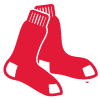 Bobby Dalbec, 1B, Red Sox: Dalbec was nowhere near good enough for an everyday first baseman for most of the season. Through his first 90 games, he'd managed a modest 11 homers, a number not nearly good enough to offset his .215/.260/.391 slash line. He displayed abysmal plate discipline, walking in just 4.5 percent of his plate appearances while striking out 38.3 percent of the time. Something clicked for him in early August, however, as he's gone on to hit .330/.410/.784 with 10 homers in 29 games since then, including three homers in his past five contests. The fact that his improvement comes with a dramatic step forward in both his walk and strikeout rates, which sit at 10.0 percent and 24.0 percent over that stretch, respectively, makes it far easier to buy into its sustainability. Dalbec was always supposed to be a player with big, raw power and equally big contact issues, and while his recent run can't lead us to conclusively say the power will win out, it's a very encouraging step in the right direction.
Bobby Dalbec, 1B, Red Sox: Dalbec was nowhere near good enough for an everyday first baseman for most of the season. Through his first 90 games, he'd managed a modest 11 homers, a number not nearly good enough to offset his .215/.260/.391 slash line. He displayed abysmal plate discipline, walking in just 4.5 percent of his plate appearances while striking out 38.3 percent of the time. Something clicked for him in early August, however, as he's gone on to hit .330/.410/.784 with 10 homers in 29 games since then, including three homers in his past five contests. The fact that his improvement comes with a dramatic step forward in both his walk and strikeout rates, which sit at 10.0 percent and 24.0 percent over that stretch, respectively, makes it far easier to buy into its sustainability. Dalbec was always supposed to be a player with big, raw power and equally big contact issues, and while his recent run can't lead us to conclusively say the power will win out, it's a very encouraging step in the right direction.
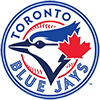 Alejandro Kirk, C, Blue Jays: If not for the hip injury that cost him almost three months earlier this season, Kirk could be one of the top-earning catchers in the league. He had a decent enough .225/.326/.475 slash line when he went down with the injury in early May, but his performances since he returned to the roster in late July have been excellent. He's hit .296/.372/.520 over that stretch, homering five times while striking out in just 11.5 percent of his plate appearances. If you drop the minimum to 150 plate appearances, he ranks fifth among catchers in wRC+ with a mark of 133. Few catchers come anywhere close to his combination of contact and power. Only Austin Nola beats his 11.9 percent strikeout rate among the aforementioned group, while no one else in the top 13 in strikeout rate can top his .232 ISO. None of this should come as a big surprise, as Kirk was always expected to have a rare bat for the position. Defense remains a question mark, but his bat is good enough that the Blue Jays have found a lineup spot for him in 14 of their last 20 games, including five appearances as a designated hitter.
Alejandro Kirk, C, Blue Jays: If not for the hip injury that cost him almost three months earlier this season, Kirk could be one of the top-earning catchers in the league. He had a decent enough .225/.326/.475 slash line when he went down with the injury in early May, but his performances since he returned to the roster in late July have been excellent. He's hit .296/.372/.520 over that stretch, homering five times while striking out in just 11.5 percent of his plate appearances. If you drop the minimum to 150 plate appearances, he ranks fifth among catchers in wRC+ with a mark of 133. Few catchers come anywhere close to his combination of contact and power. Only Austin Nola beats his 11.9 percent strikeout rate among the aforementioned group, while no one else in the top 13 in strikeout rate can top his .232 ISO. None of this should come as a big surprise, as Kirk was always expected to have a rare bat for the position. Defense remains a question mark, but his bat is good enough that the Blue Jays have found a lineup spot for him in 14 of their last 20 games, including five appearances as a designated hitter.
FALLERS
 Cody Bellinger, 1B/OF, Dodgers: Bellinger did something Sunday that he hadn't done since August: record a hit. He's now 1-for-27 for the month. That follows an August in which he hit .191/.215/.382, a line which at least counted as an improvement compared to his .118/.186/.215 line in July. For a player who's reached the heights that he has, it's no surprise that he kept getting chances to hit his way out of his season-long slump, but it looks as though the Dodgers are finally starting to give up on him, as he sat twice in three games in the weekend series against the Padres. Fantasy managers probably want to give up on him as well if they haven't already. Figuring out how to value him for next season is going to be a very difficult task. You could blame the entirety of his struggles on the shoulder issue he underwent surgery for in November, and he's also battled multiple other injuries throughout the year. On the other hand, his .239/.333/.455 slash line last season wasn't particularly impressive and represented career lows in all three categories. It's hard to imagine him continuing to struggle to anywhere near this extent, and a healthy offseason should help him quite a bit, but a bounceback merely to his 2020 numbers might be all that can reasonably be expected.
Cody Bellinger, 1B/OF, Dodgers: Bellinger did something Sunday that he hadn't done since August: record a hit. He's now 1-for-27 for the month. That follows an August in which he hit .191/.215/.382, a line which at least counted as an improvement compared to his .118/.186/.215 line in July. For a player who's reached the heights that he has, it's no surprise that he kept getting chances to hit his way out of his season-long slump, but it looks as though the Dodgers are finally starting to give up on him, as he sat twice in three games in the weekend series against the Padres. Fantasy managers probably want to give up on him as well if they haven't already. Figuring out how to value him for next season is going to be a very difficult task. You could blame the entirety of his struggles on the shoulder issue he underwent surgery for in November, and he's also battled multiple other injuries throughout the year. On the other hand, his .239/.333/.455 slash line last season wasn't particularly impressive and represented career lows in all three categories. It's hard to imagine him continuing to struggle to anywhere near this extent, and a healthy offseason should help him quite a bit, but a bounceback merely to his 2020 numbers might be all that can reasonably be expected.
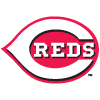 Mike Moustakas, 1B/2B/3B, Reds: Injuries and age appear to have taken their toll on the 33-year-old infielder. He's been filling a platoon role at third base with Eugenio Suarez since he returned from a heel injury in early August, an issue which had kept him out since mid-May. That arrangement should have in theory helped Moustakas' ratios at the expense of his counting stats. Instead, he's gone on to hit just .182/.241/.351 over 83 plate appearances since his return to action. He's struck out at a 28.9 percent clip over that stretch, far above his career mark of 16.2 percent. He's also not hitting the ball particularly hard, posting a 34.0 percent hard-hit rate over that stretch, though he actually had an even worse 29.2 percent hard-hit rate prior to the injury. Moustakas still calls one of the most hitter-friendly parks in the league home and has a long track record as an above-average or better hitter, but he may simply not be that guy anymore.
Mike Moustakas, 1B/2B/3B, Reds: Injuries and age appear to have taken their toll on the 33-year-old infielder. He's been filling a platoon role at third base with Eugenio Suarez since he returned from a heel injury in early August, an issue which had kept him out since mid-May. That arrangement should have in theory helped Moustakas' ratios at the expense of his counting stats. Instead, he's gone on to hit just .182/.241/.351 over 83 plate appearances since his return to action. He's struck out at a 28.9 percent clip over that stretch, far above his career mark of 16.2 percent. He's also not hitting the ball particularly hard, posting a 34.0 percent hard-hit rate over that stretch, though he actually had an even worse 29.2 percent hard-hit rate prior to the injury. Moustakas still calls one of the most hitter-friendly parks in the league home and has a long track record as an above-average or better hitter, but he may simply not be that guy anymore.
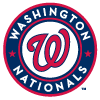 Josiah Gray, SP, Nationals: I was excited for Gray to get a chance in the rotation down the stretch following his inclusion in the Scherzer trade at the deadline, as he owned a career 2.41 ERA and 29.2 percent strikeout rate in the minors and struck out an incredible 38.6 percent of the batters he faced over four Triple-A appearances this season. His first five appearances as a National were fairly encouraging, as he owned a 2.89 ERA while striking out 25.0 percent of opposing batters and walking 6.9 percent. The wheels have fallen off in his last three outings, however, as his strikeout and walk rates have converged at an awful 16.1 percent, leading to a 12.75 ERA and 2.25 WHIP. Even when things were going well for him, he struggled to keep the ball on the ground. He's allowed 17 homers in just 48 innings this season, and while his 23.9 percent HR/FB rate should regress to his benefit going forward, he's likely to continue to give up too many long balls unless he can improve on his 29.8 percent groundball rate. This poor stretch shouldn't diminish future expectations for Gray by too much, but it's clear that he's not yet a finished product.
Josiah Gray, SP, Nationals: I was excited for Gray to get a chance in the rotation down the stretch following his inclusion in the Scherzer trade at the deadline, as he owned a career 2.41 ERA and 29.2 percent strikeout rate in the minors and struck out an incredible 38.6 percent of the batters he faced over four Triple-A appearances this season. His first five appearances as a National were fairly encouraging, as he owned a 2.89 ERA while striking out 25.0 percent of opposing batters and walking 6.9 percent. The wheels have fallen off in his last three outings, however, as his strikeout and walk rates have converged at an awful 16.1 percent, leading to a 12.75 ERA and 2.25 WHIP. Even when things were going well for him, he struggled to keep the ball on the ground. He's allowed 17 homers in just 48 innings this season, and while his 23.9 percent HR/FB rate should regress to his benefit going forward, he's likely to continue to give up too many long balls unless he can improve on his 29.8 percent groundball rate. This poor stretch shouldn't diminish future expectations for Gray by too much, but it's clear that he's not yet a finished product.













